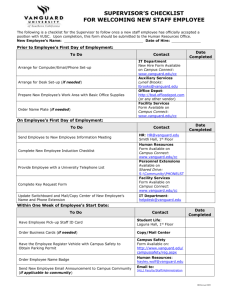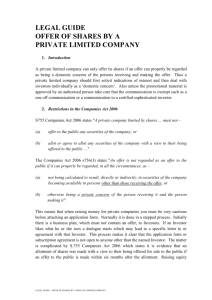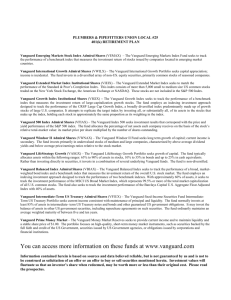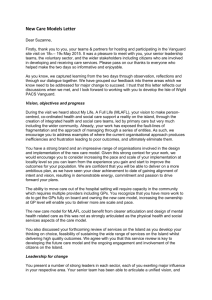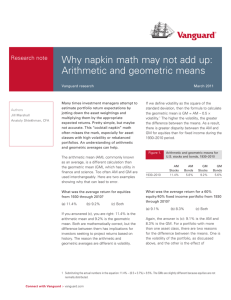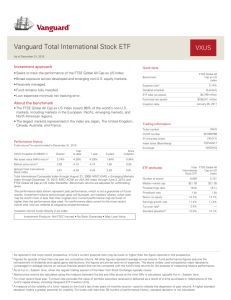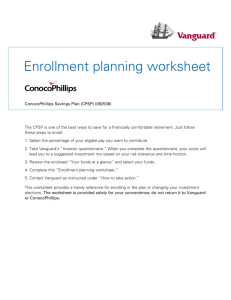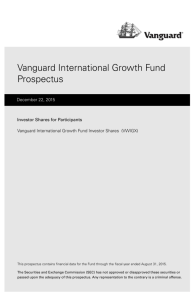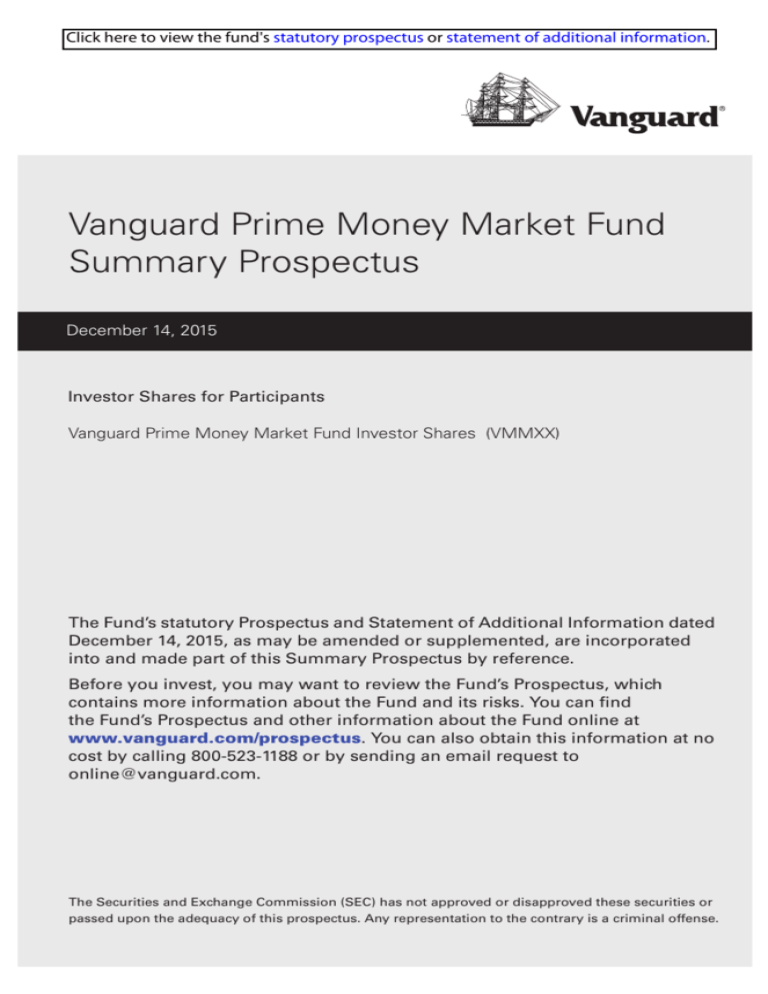
Click here to view the fund's statutory prospectus or statement of additional information.
Vanguard Prime Money Market Fund
Summary Prospectus
December 14, 2015
Investor Shares for Participants
Vanguard Prime Money Market Fund Investor Shares (VMMXX)
The Fund’s statutory Prospectus and Statement of Additional Information dated
December 14, 2015, as may be amended or supplemented, are incorporated
into and made part of this Summary Prospectus by reference.
Before you invest, you may want to review the Fund’s Prospectus, which
contains more information about the Fund and its risks. You can find
the Fund’s Prospectus and other information about the Fund online at
www.vanguard.com/prospectus. You can also obtain this information at no
cost by calling 800-523-1188 or by sending an email request to
online@vanguard.com.
The Securities and Exchange Commission (SEC) has not approved or disapproved these securities or
passed upon the adequacy of this prospectus. Any representation to the contrary is a criminal offense.
Investment Objective
The Fund seeks to provide current income while maintaining liquidity and a stable
share price of $1.
Fees and Expenses
The following table describes the fees and expenses you may pay if you buy and hold
Investor Shares of the Fund.
Shareholder Fees
(Fees paid directly from your investment)
Sales Charge (Load) Imposed on Purchases
None
Purchase Fee
None
Sales Charge (Load) Imposed on Reinvested Dividends
None
Redemption Fee
None
Annual Fund Operating Expenses
(Expenses that you pay each year as a percentage of the value of your investment)
Management Fees
0.13%
12b-1 Distribution Fee
None
Other Expenses
0.03%
0.16%
Total Annual Fund Operating Expenses
1
1 Vanguard and the Fund's board have voluntarily agreed to temporarily limit certain net operating expenses in excess of the
Fund's daily yield so as to maintain a zero or positive yield for the Fund. Vanguard and the Fund's board may terminate the
temporary expense limitation at any time.
Example
The following example is intended to help you compare the cost of investing in the
Fund’s Investor Shares with the cost of investing in other mutual funds. It illustrates
the hypothetical expenses that you would incur over various periods if you invested
$10,000 in the Fund’s shares. This example assumes that the Shares provide a return
of 5% each year and that total annual fund operating expenses remain as stated in the
preceding table. You would incur these hypothetical expenses whether or not you
redeem your investment at the end of the given period. Although your actual costs
may be higher or lower, based on these assumptions your costs would be:
1
1 Year
3 Years
5 Years
10 Years
$16
$52
$90
$205
Principal Investment Policies
The Fund invests primarily in high-quality, short-term money market instruments,
including certificates of deposit, banker’s acceptances, commercial paper, Eurodollar
and Yankee obligations, and other money market securities. To be considered highquality, a security generally must be rated in one of the two highest credit-quality
categories for short-term securities by at least two nationally recognized rating
services (or by one, if only one rating service has rated the security). If unrated, the
security must be determined by Vanguard to be of quality equivalent to securities in
the two highest credit-quality categories. The Fund invests more than 25% of its
assets in securities issued by companies in the financial services industry. The Fund
maintains a dollar-weighted average maturity of 60 days or less and a dollar-weighted
average life of 120 days or less.
Principal Risks
The Fund is designed for investors with a low tolerance for risk; however, the Fund is
subject to the following risks, which could affect the Fund’s performance:
• Income risk, which is the chance that the Fund’s income will decline because of
falling interest rates. Because the Fund’s income is based on short-term interest
rates—which can fluctuate significantly over short periods—income risk is expected
to be high.
• Manager risk, which is the chance that poor security selection will cause the Fund to
underperform relevant benchmarks or other funds with a similar investment objective.
• Credit risk, which is the chance that the issuer of a security will fail to pay interest or
principal in a timely manner or that negative perceptions of the issuer’s ability to make
such payments will cause the price of that security to decline. Credit risk should be
very low for the Fund because it invests primarily in securities that are considered to
be of high quality.
• Industry concentration risk, which is the chance that there will be overall problems
affecting a particular industry. Because the Fund invests more than 25% of its assets
in securities issued by companies in the financial services industry, the Fund’s
performance depends to a greater extent on the overall condition of that industry and
is more susceptible to events affecting that industry.
An investment in the Fund is not a deposit of a bank and is not insured or
guaranteed by the Federal Deposit Insurance Corporation or any other
government agency. Although the Fund seeks to preserve the value of your
investment at $1 per share, it is possible to lose money by investing in the Fund.
2
Annual Total Returns
The following bar chart and table are intended to help you understand the risks of
investing in the Fund. The bar chart shows how the performance of the Fund‘s
Investor Shares has varied from one calendar year to another over the periods shown.
The table shows how the average annual total returns of the Investor Shares compare
with those of a relevant market index and a comparative benchmark, which have
investment characteristics similar to those of the Fund. Returns for the Money Market
Funds Average are derived from data provided by Lipper, a Thomson Reuters
Company. Keep in mind that the Fund’s past performance does not indicate how the
Fund will perform in the future. Updated performance information is available on our
website at vanguard.com/performance or by calling Vanguard toll-free at 800-662-7447.
Annual Total Returns — Vanguard Prime Money Market Fund Investor Shares1
2005
2006
2007
4.88
5.14
2008
2009
2010
2011
2012
2013
2014
0.53
0.06
0.05
0.04
0.02
0.01
10%
5%
3.01
2.77
0%
-5%
-10%
1 The year-to-date return as of the most recent calendar quarter, which ended on September 30, 2015, was 0.02%.
During the periods shown in the bar chart, the highest return for a calendar quarter
was 1.29% (quarter ended December 31, 2006), and the lowest return for a quarter
was 0.00% (quarter ended March 31, 2014).
Average Annual Total Returns for Periods Ended December 31, 2014
1 Year
Vanguard Prime Money Market Fund Investor Shares
5 Years
10 Years
0.01%
0.04%
1.63%
Citigroup 3-Month U.S. Treasury Bill Index
(reflects no deduction for fees or expenses)
0.03%
0.06%
1.46%
Money Market Funds Average
0.00
0.00
1.31
Comparative Benchmarks
3
Investment Advisor
The Vanguard Group, Inc. (Vanguard)
Portfolio Manager
David R. Glocke, Principal of Vanguard and head of Vanguard’s Taxable Money Market
Funds. He has managed the Fund since 2003.
Tax Information
The Fund’s distributions will be reinvested in additional Fund shares and accumulate on
a tax-deferred basis if you are investing through an employer-sponsored retirement or
savings plan. You will not owe taxes on these distributions until you begin withdrawals
from the plan. You should consult your plan administrator, your plan’s Summary Plan
Description, or your tax advisor about the tax consequences of plan withdrawals.
Payments to Financial Intermediaries
The Fund and its investment advisor do not pay financial intermediaries for sales of
Fund shares.
4
This page intentionally left blank.
This page intentionally left blank.
Click here to view the fund's statutory prospectus or statement of additional information.
Vanguard Prime Money Market Fund Investor Shares—Fund Number 30
© 2015 The Vanguard Group, Inc. All rights reserved.
Vanguard Marketing Corporation, Distributor.
SPI 030 122015


